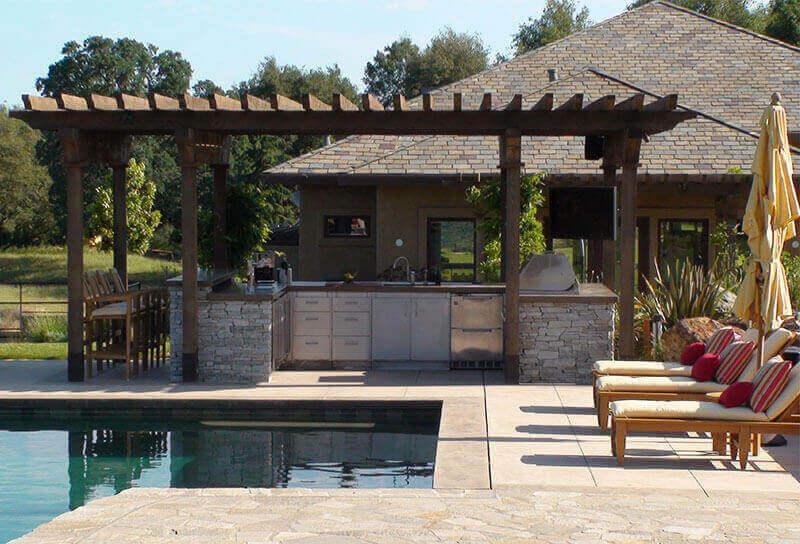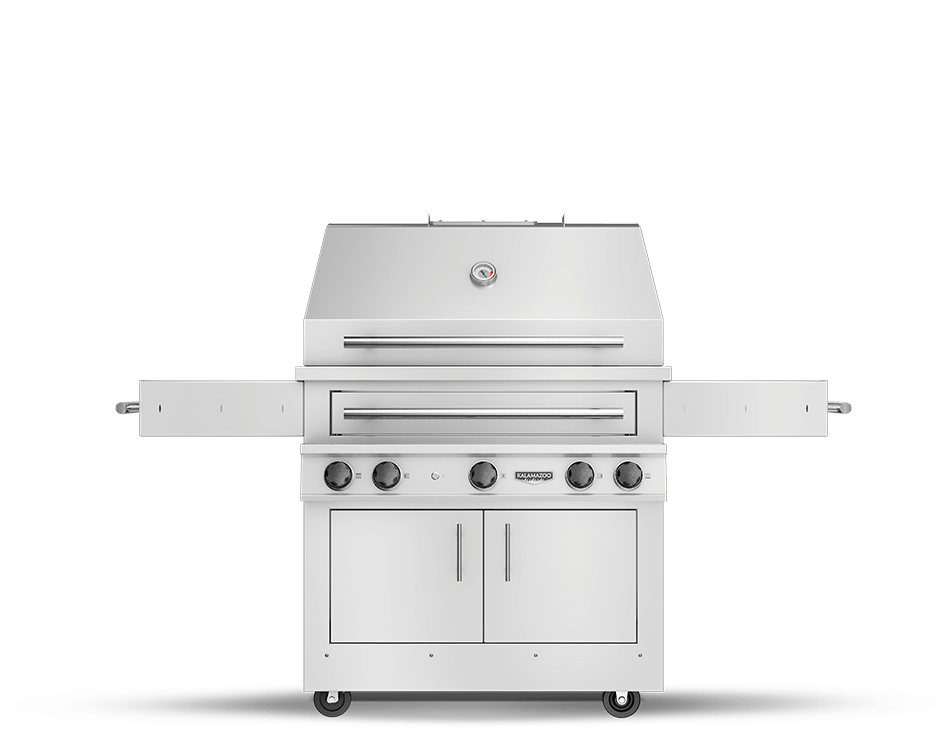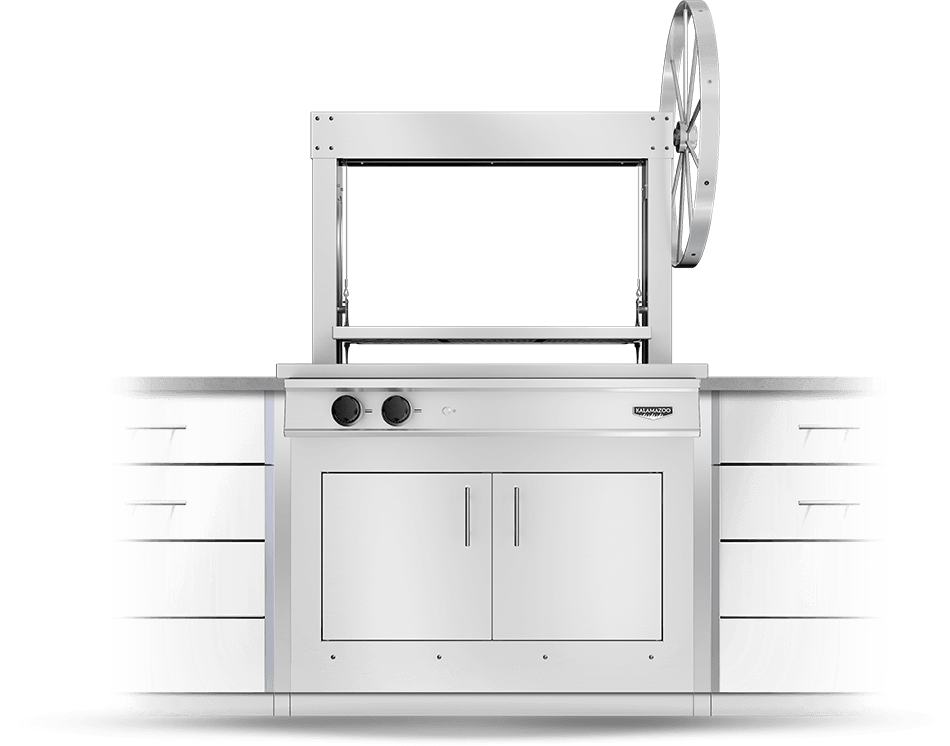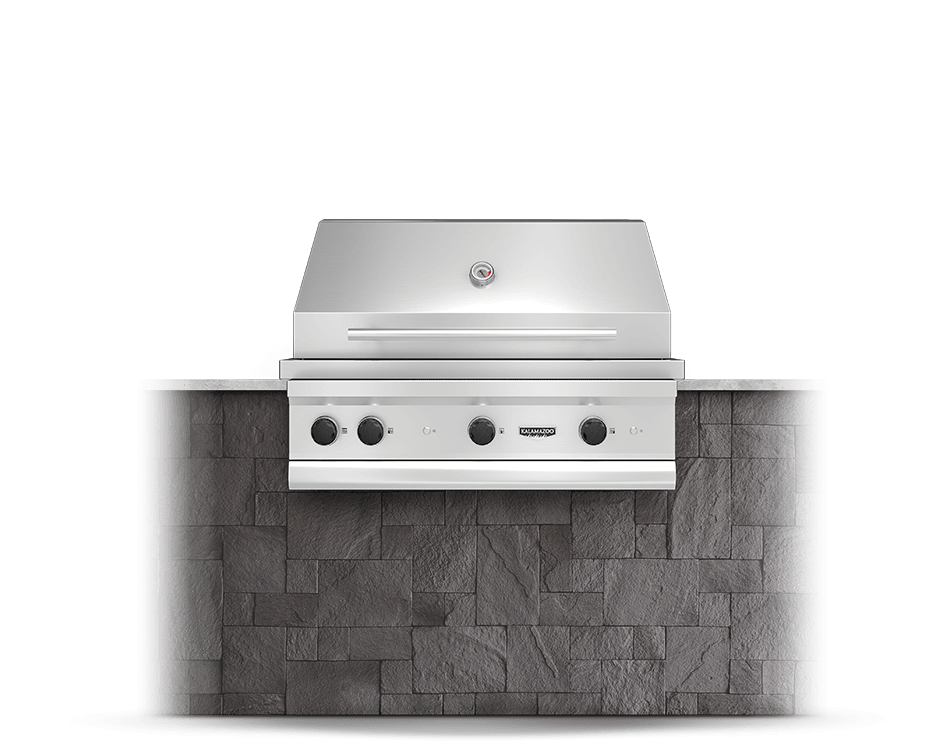Resort-style Entertaining | Outdoor Kitchen by Anza Living Spaces

A three-season trellised kitchen serves at this five acre backyard's social hub.
When the owners purchased this parcel of land in California’s Sierra foothills, they knew they wanted to turn the undeveloped five-acre sloping backyard into a complete resort-style outdoor living area, fit for entertaining on a large scale. They commissioned Dale Hoover, principal at Phoenix, Arizona-based firm Anza Living Spaces. As part of the entire project, Hoover created a “three-season” trellised kitchen (frequent storms in the foothills inhibit the outdoor kitchen’s use in the winter) that became the social hub of the backyard. The kitchen, adjacent to a 65-foot-long infinity pool and surrounded by terraced planters with Lavandula stoechas “Otto Quast” Spanish lavender and Erigeron karvinskianus “Santa Barbara” daisy (selected by landscape designer Mark Olson of GardenCrafters Landscape & Design), offers spectacular views of the Sacramento Valley and refreshing, cool breezes. Click here to see more pictures.
Q: What were your clients’ objectives?
A: The owners wanted their backyard environment to feel like a resort. When they entertain, they do it on a grand scale. With literally acres to work with, we planned the developed portion of the space to provide for distinct areas for different activities — some intimate, some active — visually and literally connected by common architectural elements. The outdoor kitchen was designed much like an interior kitchen — self-contained so trips back to the house were minimized.
Q: What are the kitchen’s main features?
A: It's hard to ignore the Kalamazoo grill, the raised drink bar, the quality of the dry-stack stone or the expanse of the custom-made concrete countertop. But this design was not intended to celebrate the equipment or the architecture. Instead, the kitchen as a whole was simply intended to be the social hub of the pool area and deliver a wide range of food and beverage to friends and family. The main feature of the kitchen is its informal and inviting feel.
Q: Where is the kitchen placed within the context of the garden?
A: The kitchen is located 50 yards from the main house, flanked by the pool on one side and lush lawn and natural landscaping on the other. Setting the kitchen adjacent to the pool was natural: It's one place where family and guests naturally congregate. It is physically removed from the house, which adds a level of informality to the experience. Its also allows for unencumbered cool breezes and breathtaking panoramic views of the valley below.
Q: Were there any challenges with space or installation? If so, how did you solve them?
A: There were no real challenges with this installation. Utilities for the kitchen, which could have been a challenge due to distance from the house, were integrated with the utilities required for the pool itself.
Q: What brand of appliances did you use?
A: All of the appliances and cabinets were sourced through Kalamazoo Outdoor Gourmet, which greatly simplified coordination of individual pieces. It was fully equipped with a Kalamazoo dual fuel grill because it offered monster capacity, terrific flexibility and killer BTUs. Other appliances include a kegerator [a built-in, refrigerated keg], an under-counter refrigerator, refrigerator drawers, an ice maker and stainless-steel storage units.
Q: Were there any additional elements that you customized or retrofitted to work for this outdoor kitchen design?
A: The under-counter stainless-steel storage cabinets required some customization to coordinate between the masonry enclosure and specified appliances.
Q: How does the outdoor kitchen relate to the overall garden and house?
A: The kitchen is an important component of the overall design. From a planning perspective, its relationship was designed to offer terrific entertaining at poolside, where much of the outdoor activity takes place during the summer months. Visually, the overhead trellis structure and dry-stack stone were meant to bring the kitchen into the vernacular of other structures we recently introduced on the site. The architecture of the kitchen was designed to fill its spot in the visual hierarchy of the whole.
Q: Was the kitchen a part of the garden’s original master plan, or was it a stand-alone project?
A: It was definitely part of the original master plan of the site. We started with a clean slate, and all of the component parts of the program — active, intimate, work and play spaces — were creatively assembled, like a puzzle, to take full advantage of the unique attributes of the site and accommodate the multiple needs of the owner. The design was intended to emphasize, rather than compete against, the natural beauty of the site.
Q: Do you have any advice for executing a similar kitchen on a smaller budget?
A: Although outdoor kitchens must be designed to withstand extremely harsh conditions, the most important consideration in a successful design is not necessarily high-end products or materials. Not every outdoor kitchen needs an ice maker or a 38-inch-wide grill. These are all areas where one can reduce cost. But what is crucial is creating a space that is comfortable, enjoyable and efficient — and investing appropriately so the host can enjoy outdoor living and entertaining rather than dread it.
Q: Were there any other furnishings/decor used to complete the space?
A: Amalfi teak bar chairs and 42-inch Mandalay bar tables from Kingsley Bate were installed adjacent to the kitchen’s raised bar area. The style of these pieces reinforced the natural feel of the concept, added additional seating capacity and lingering space in this very active area, and provided close contact with the social hub of the kitchen.
For more information on Dale Hoover’s work, visit anzalivingspaces.com.





